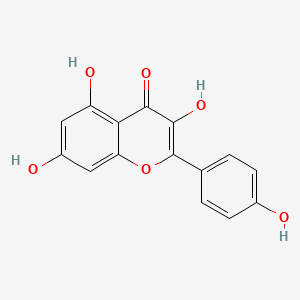The conventional treatments for hepatitis C are interferon and ribavirin, which can cause major side effects and aren't effective in all patients. But something interesting and unique has been achieved by UCLA researchers.
As per the claim by the lead researcher Samuel French Assistant Professor, Pathology of UCLA, they have identified major two cellular proteins (HSPs, heat shock proteins 40 and 70) that play an important role in hepatitis C infection, and they say the finding may point to new and less toxic treatments for the disease, which can lead to cirrhosis and liver cancer. The researchers also found that Quercetin, blocks the synthesis of two heat shock proteins 40 and 70proteins and significantly inhibited viral infection in tissue culture.
Quercetin (see the structure) :
Is a plant-derived flavonoid, specifically a flavonol, used as a nutritional supplement. Laboratory studies show it may have anti-inflammatory and antioxidant properties, and it is being investigated for a wide range of potential health benefits.Interestingly American cancer society, says that while quercetin has been promoted as being effective against a wide variety of diseases, including cancer, There is current early-stage clinical research on quercetin addressing safety and efficacy against sarcoidosis, asthma and glucose absorption in obesity and diabetes. Food riches in Quercetin includes, capers, lovage, apples, tea (Camellia sinensis), onion, especially red onion (higher concentrations of quercetin occur in the outermost rings), red grapes, citrus fruit, tomato, broccoli and other leafy green vegetables, cherries and berries.
Significant claims by the researchers are ;
a. quercetin targets cellular proteins rather than viral proteins, there is less likelihood of developing viral
resistance (cellular proteins cannot change like viral proteins can);
b. quercetin may allow for the dissection of the viral life cycle and has potential therapeutic use to reduce
virus production with low associated toxicity.
Hope the researcher will have positive results from the phase 1 clinical trial.....
Ref :http://www.cancer.ucla.edu/Index.aspx?page=644&recordid=312
virus production with low associated toxicity.
Hope the researcher will have positive results from the phase 1 clinical trial.....
Ref :http://www.cancer.ucla.edu/Index.aspx?page=644&recordid=312





